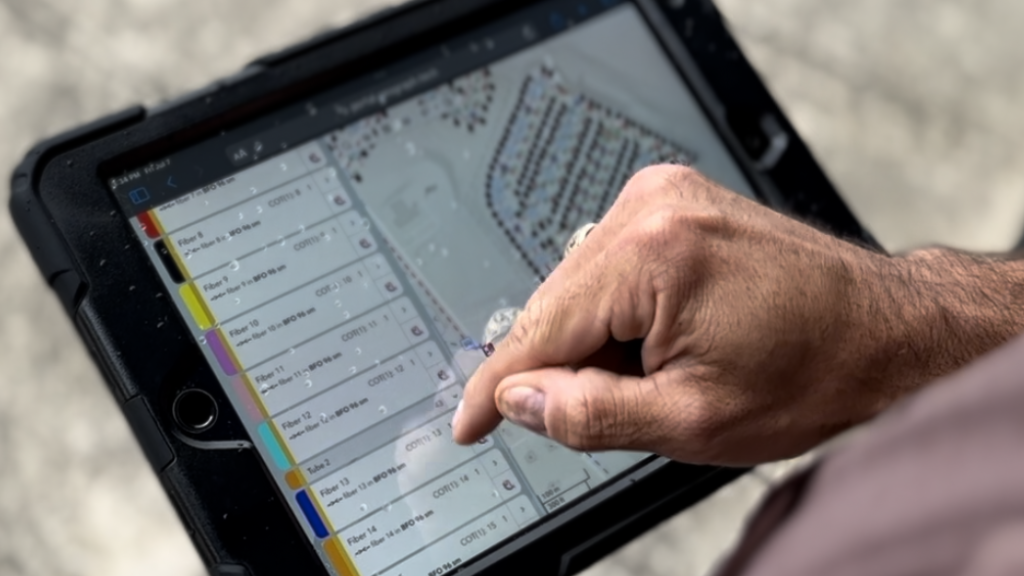In fiber network management, clinging to paper maps and decades-old CAD printouts is like navigating with old charts in a GPS era. Legacy tools might get the job done eventually, but at what hidden cost? Operational inefficiencies – from slow data retrieval to duplicate data entry – quietly drain resources. Teams often spend hours reconciling mismatched spreadsheets or hunting down the latest blueprint. One analysis found that forcing fiber records into general tools like spreadsheets and Visio creates an “impossible task,” resulting in substantial time lost, siloed data, and wasted money.

Wasted Time, Wasted Budget
Every minute an engineer spends wrestling with binders or outdated CAD files is a minute not spent improving the network. These hidden labor costs add up. Legacy fiber management processes can inflate network operating costs by as much as 20% when you factor in all the extra steps and fixes. Data entry mistakes average $11 each to correct – and if you’re copying data between spreadsheets, those errors multiply quickly. In short, outdated tools often mean doing the same work twice. The ROI of modernizing becomes clear when you consider how much time and rework a unified system can save.
Operational Risks and Downtime
Beyond budget concerns, outdated tools introduce operational risks. Incomplete or inaccurate data can lead to faulty decisions – like misrouting a fiber run because an old paper map had sketchy details. Outage response is another pain point. When a fiber cut occurs, teams using legacy maps scramble to cross-reference paper notes and old schematics, losing precious time in the process. It’s no surprise that 50% of providers lack real-time visibility into their network with such workflows. That delay in pinpointing issues means longer network downtime, missed SLA targets, and unhappy customers. Disjointed records also foster miscommunication, leading to mistakes like dispatching repair crews to the wrong location or arriving on-site underprepared.
Falling Behind the Curve
Sticking with legacy mapping doesn’t just hurt internal operations – it leaves you falling behind industry peers. Competitors who adopt real-time GIS can restore service in minutes by instantly pinpointing fiber break locations, while your team might still be flipping through binders. Modern platforms break down silos by sharing one live map across departments. In contrast, fragmented data means one hand of the organization doesn’t know what the other is doing – and 65% of ISPs using legacy tools report data silos. This lack of a unified view makes it hard to adapt to changing demands or scale up efficiently.

The CrescentLink Advantage
GEOGRAPH’s CrescentLink™ platform is a real-time, centralized GIS solution that serves as a single source of truth – essentially a digital twin of your network. Instead of juggling multiple files and printouts, your team can see all network assets and connections in one interactive map. Collaboration becomes seamless because everyone from GIS analysts to field techs works off the same up-to-date data. Outage management becomes proactive: dispatchers can isolate a fault and guide crews to the exact location in seconds. Planning new projects is faster too – you can model network expansions or reroutes digitally and identify the optimal plan without guesswork. The payoff is tangible: one telecom operator found it took over 2× longer to plan routes and troubleshoot issues before switching to CrescentLink. By cutting design and repair times in half, CrescentLink frees your team to focus on growth and customer satisfaction.
Modernizing fiber mapping is about eliminating hidden costs and future-proofing your operations. The inefficiencies, risks, and delays are avoidable. By upgrading to a platform like CrescentLink, you turn mapping from a bottleneck into a competitive advantage.
Ready to see the difference a modern fiber GIS can make?
Reach out today and let GEOGRAPH help transform your network.



